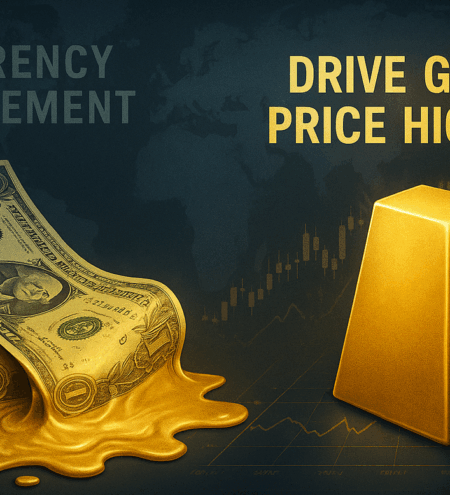Gold’s long-standing reputation as a safe-haven asset is once again taking centre stage, with JPMorgan Chase projecting a remarkable surge in prices over the coming years. According to the investment banking giant, gold could climb above $4,000 per ounce by the second quarter of 2026, driven by escalating economic risks and sustained demand from both institutional and central bank buyers.
A Bullish Outlook Fueled by Global Tensions
The forecast comes amid growing concerns over the trajectory of the global economy. JPMorgan attributes its bullish stance to increasing probabilities of a U.S. recession, potentially triggered by rising tariffs and deepening trade frictions between the United States and China. As geopolitical tensions intensify, investors are expected to seek refuge in gold, pushing demand—and prices—even higher.
In a notable revision, JPMorgan has also raised its price target for the fourth quarter of 2025, now expecting gold to average $3,675 per ounce. However, analysts at the bank suggest this could prove conservative, with gold potentially breaching the $4,000 level sooner if demand accelerates beyond current expectations.
Record-Breaking Rally Sets the Stage
This revised outlook follows a significant surge in the Gold Spot U.S. Dollar (CM:XAUUSD), which has gained an impressive 33% year-to-date, recently hitting a new all-time high of $3,500 per ounce on April 22. The rally has been driven by a combination of factors, including heightened geopolitical uncertainty, a weakening dollar, and persistent inflationary pressures.
JPMorgan is not alone in its optimism. Goldman Sachs has also updated its gold outlook, raising its mid-2026 target to $4,000 per ounce, underscoring a growing consensus among major financial institutions that gold’s upward momentum is far from over.
Central Bank Buying Remains a Key Catalyst
A critical driver behind the bullish projections is robust central bank activity. According to JPMorgan, global central banks are expected to continue their aggressive gold accumulation, averaging around 710 tonnes of net purchases per quarter in 2025. This trend reflects a broader shift among nations seeking to diversify reserves away from the U.S. dollar and enhance economic resilience in the face of geopolitical fragmentation.
Investor interest is also on the rise, particularly among those looking to hedge against inflation, currency debasement, and equity market volatility. Gold-backed ETFs have seen renewed inflows, further supporting prices.
Caution Amid Optimism: Risks to Watch
Despite the promising outlook, JPMorgan warns that certain downside risks could temper gold’s ascent. If central banks reduce their gold purchases or if the U.S. economy proves more resilient than anticipated—despite trade tensions and elevated tariffs—the Federal Reserve may adopt a more aggressive stance on interest rates. Such a move could strengthen the dollar and weigh on gold prices.
Additionally, any signs of easing inflation or a de-escalation in global trade disputes could dampen investor demand for gold, at least in the short term.
Bottom Line
JPMorgan’s forecast signals a strong belief in gold’s long-term appeal amid a backdrop of economic uncertainty and global realignment. With prices already at historic highs and demand remaining robust, the path toward $4,000 gold appears increasingly plausible—though not without potential hurdles along the way. For investors seeking stability in an unpredictable world, gold continues to shine as a compelling asset.


